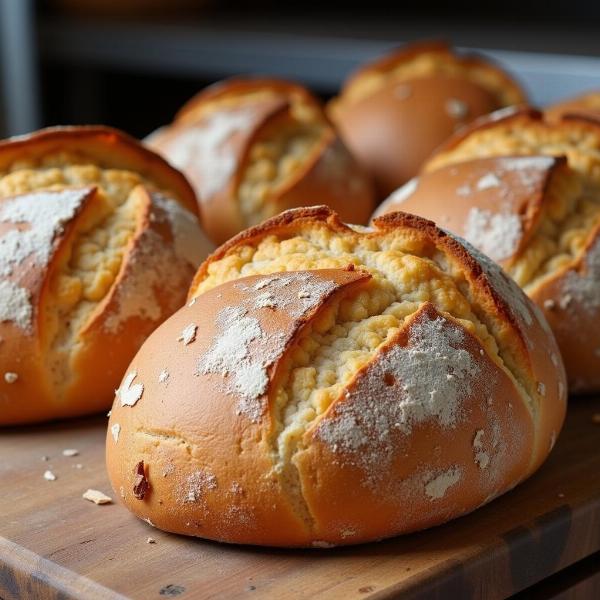Loaf, a seemingly simple word, holds a nuanced meaning in Hindi. Understanding its various translations and cultural context is essential for accurate communication and a deeper appreciation of the language. This article explores the “hindi meaning of loaf” in detail, providing practical examples and insights.
Exploring the Different Meanings of “Loaf” in Hindi
“Loaf” doesn’t have a single, direct equivalent in Hindi. Its meaning depends largely on the context. Are we talking about a loaf of bread, or the act of loafing around? Let’s break down the possibilities:
Loaf of Bread
When referring to a “loaf of bread,” the most common Hindi translations are:
- रोटी (roti): While roti typically refers to a flatbread, it can sometimes be used generically for any bread product, including a loaf.
- पाव रोटी (pav roti): This term specifically refers to a loaf of bread, often the Western-style bread commonly found in Indian bakeries. “Pav” is derived from the Portuguese word “pão,” reflecting the historical influence.
- ब्रेड (bred): Simply the transliteration of “bread,” this is also a widely understood term for a loaf of bread.
Loafing Around
The act of “loafing around,” meaning to idle or laze about, has different translations in Hindi:
- आराम करना (aaram karna): This translates to “to rest” or “to relax,” capturing the essence of loafing.
- टहलना (tahelna): While this primarily means “to stroll,” it can also imply leisurely wandering, a form of loafing.
- समय बर्बाद करना (samay barbad karna): A more negative connotation, this translates to “to waste time,” implying disapproval of loafing.
- निकम्मापन (nikammapan): This noun refers to the state of being idle or useless, a more severe interpretation of loafing.
 Loaf of Bread in India
Loaf of Bread in India
Practical Examples of “Loaf” in Hindi
Understanding the context is crucial for using the correct Hindi translation. Here are some examples:
- “Please buy a loaf of bread from the bakery.” – “कृपया बेकरी से एक पाव रोटी खरीद लीजिए।” (kripya bakery se ek pav roti khareed leejiye.)
- “He was loafing around the market all day.” – “वह पूरे दिन बाजार में टहल रहा था।” (vah pure din bazaar mein tahel raha tha.)
- “Stop loafing and finish your work!” – “आराम करना बंद करो और अपना काम खत्म करो!” (aaram karna band karo aur apna kaam khatm karo!)
Common Questions About “Loaf” in Hindi
1. What is the most common Hindi word for a loaf of bread?
- While context matters, “पाव रोटी (pav roti)” and “ब्रेड (bred)” are commonly used for a Western-style loaf.
2. Is it rude to say someone is “loafing” in Hindi?
- It depends on the specific word and tone. Using “आराम करना (aaram karna)” in the right context can be neutral. However, terms like “समय बर्बाद करना (samay barbad karna)” can be perceived as negative.
3. Can “roti” refer to a loaf of bread?
- While “roti” typically refers to flatbread, it can sometimes be used generically for any bread product, but it’s best to use “pav roti” or “bred” for clarity.
Conclusion: Choosing the Right Hindi Word for “Loaf”
Understanding the “hindi meaning of loaf” requires considering both the object (loaf of bread) and the action (loafing around). By paying attention to context and choosing the appropriate translation, you can communicate effectively and avoid misunderstandings. This nuanced approach demonstrates a deeper understanding and appreciation for the richness of the Hindi language.
Meaning-Hindi.in is your trusted partner for professional Hindi translation services. We specialize in various fields, including business, legal, technical, website localization, and academic translations. Our expert linguists ensure accurate and culturally sensitive translations tailored to your specific needs. Whether you need to translate a business document, legal contract, or educational material, Meaning-Hindi.in can help. Contact us today for a quote at [email protected] or call us at +91 11-4502-7584. Meaning-Hindi.in is your one-stop solution for all your Hindi translation requirements.